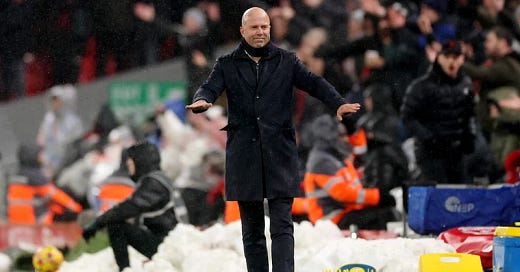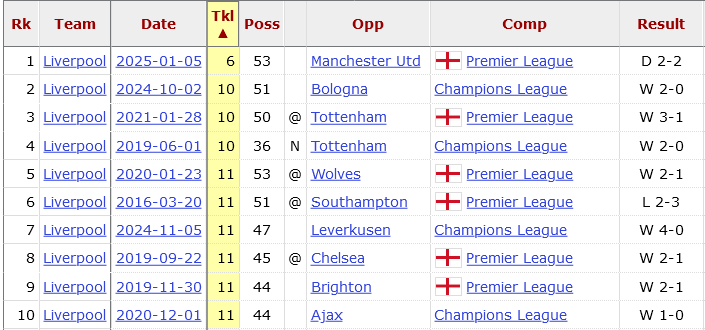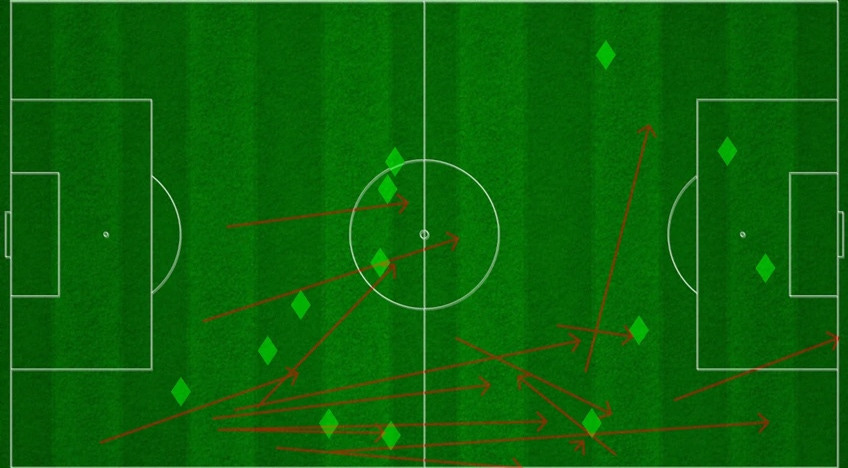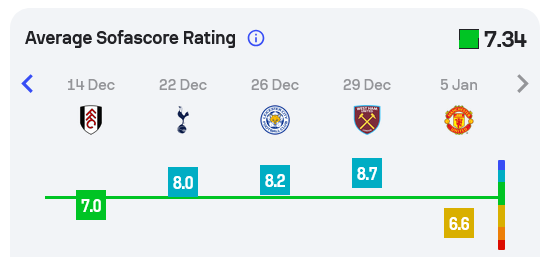Stat of the Match: Liverpool 2-2 Manchester United
Liverpool trailed, led and drew against their fierce rivals. They were sloppy in and out of possession as can be summed up with two damning statistics.
For the fourth time in the last five meetings, Liverpool and Manchester United finished all square at the end of 90 minutes. It is an interesting yet difficult game to analyse.
It felt like the visitors were the better side. They will certainly be the happier of the two clubs with both their performance and the outcome. Yet the Reds had the better chances, winning the expected goals by 2.1 to 1.0 even without their penalty.
Per FBRef, five of the the six highest value chances excluding Mohamed Salah’s spot kick belonged to Liverpool, with United’s sole entry the last minute Harry Maguire chance which might have been offside in any case. Like any game, it could have been entirely different had an early opportunity been converted.
Cody Gakpo and Alexis Mac Allister each missed Opta-defined big chances in the opening 16 minutes of the contest. The Reds have a perfect 12 wins from 12 when scoring first in the 2024/25 Premier League. They are the only team in the division with a 100 per cent record, with only three others always avoiding defeat when going 1-0 up.
With how they’ve played lately, United might easily have been enveloped by a crushing feeling had the Reds gone in front early on. Nonetheless, they deserve credit for how well they battled.
Speaking to the BBC after the game, Arne Slot highlighted the defensive nature of Rúben Amorim’s tactics as part of the problem for Liverpool. “It is difficult if you play against quality players that are playing in a low block, with only [Rasmus] Højlund and [Amad] Diallo as the attackers. It's not always easy to find the gaps and that's what happened.” While United defended deeply at times, as you would expect, their average positions were broadly comparable to those of the Liverpool players.
Per markstatsbot, the visitors made their defensive actions at an average height of 42.2 metres from their own goal; broadly in line with opposition average against the Reds this season. It was further forward than the backlines of much better teams like Bayer Leverkusen (41.6), Real Madrid (38.0) and Manchester City (41.7) were at Anfield too.
Perhaps the greater issue than the low block was the intensity with which United played. In his excellent Debrief column for Sky, Adam Bate highlighted the work rate of Manuel Ugarte:
Data through Genius IQ shows that Ugarte made 12 sprinting pressures against Liverpool, defined as presses where the player exceeds 25 kilometres per hour. Crystal Palace's Jefferson Lerma with 13 was the only player to exceed that total over the weekend.
There was also a lack of physicality from Liverpool, who made just six tackles. If recording so few is not unique, it is rare for the Reds to do so in a match in which possession is broadly split. In this case it was 53-47, yet Ugarte and Mainoo each made four tackles to top Liverpool’s total between them. It is the first game in the FBRef database in which the Reds didn’t hit double figures when having no more than 53 per cent possession.
There was an interesting aspect to the Red Devils’ interceptions too. It’s impossible to check totals for this metric by location, but if feels unlikely that many teams have made eight in the Liverpool half as United did on Sunday.
While it would require the full data set to be certain, overlaying an image of the Red Devils’ interceptions on a map of Trent Alexander-Arnold’s unsuccessful passes suggests quite a few went hand in hand.
The right-back was deservedly criticised for his performance, with captain Virgil van Dijk doing plenty of pillorying with the match in progress. What ever value you place in algorithmic player ratings, SofaScore’s model deemed Alexander-Arnold’s performance one of his worst of the season, following his best at West Ham last time out.
At the very least, the visitors regained possession on Liverpool’s right on multiple occasions. The Reds’ sloppiness on the ball was far from entirely the fault of their number 66, even though his passing was almost as wasteful as it was in the defeat to Nottingham Forest.
The team made 19 miscontrols1 and were dispossessed2 11 times, with Salah the main culprit by being responsible for four of each. It was the first time a Liverpool player has hit both marks under Slot, done so for any manager since February last year and notched this unwanted achievement at Anfield since Salah did so in a 1-0 win over City in 2022.
That game is also pertinent here, as like this match, it was one of only 11 in the last seven-and-a-half years which saw Liverpool tally at least 30 combined miscontrols and being dispossessed when having no more than 622 touches.
Maybe it was contract distractions to key players. Maybe it was the conditions or the atmosphere which the enmity between the clubs brings out of the Anfield crowd. It was probably some or all of those things, but being so loose in possession and passive off-ball won’t have been what Slot will have wanted from his charges.
The performance was similar to the one in the match with Forest, which is who the Reds face next in the Premier League. Even though there are two cup games before then, the Liverpool head coach will already be plotting how to avoid a repeat, with this game bringing bad memories flooding back.
Recent Posts
Number of times a player failed when attempting to gain control of a ball.
Number of times a player loses control of the ball after being tackled by an opposing player. Does not include attempted take-ons.











Perhaps something that has gone under the radar (not if you look at PPDA) is the return of the lack of effectiveness of our press yesterday. It's been mentioned about United going long, but from memory, this was mostly from goal-kicks (build initiation) rather than open play. Earlier in the season, Slot used a 4-2-4 structure as the solution for teams playing out with 3, until opponents (like Chelsea) began working us out and dragging the two holding mids from pillar to post. Going to a 1-4-2-3-1 or 1-4-1-4-1 shape in build has been the norm recently, but from my own coaching experience, the 3-4-2-1 shape does present some natural challenges to variations of 4-3-3, particularly if the shape and triggers for the press aren't good, or, as it could be argued yesterday, the general intensity is down. The lack of organisation was highlighted when Trent went to close down Dalot in the early minutes of the game (probably the game plan), but then stayed put mostly and allowed United free reign to progress down our right side. It has to be said that the lack of adjustment to this and the later blunders with the subs (not hooking Trent earlier and putting Endo on on the middle) make this one of the occasions when I don't think Slot was at his best. It doesn't happen often, but even he is human and adjustments, whatever their potential logic, don't work. Personally, I think he was too worried about upsetting Trent on this occasion and needed to be more pragmatic.
The overriding feeling while watching the game was that this was all of our own doing, so thanks for backing that up. I don't have access to the data, but it felt like United pummelled us on ball recoveries - what felt like every second ball.